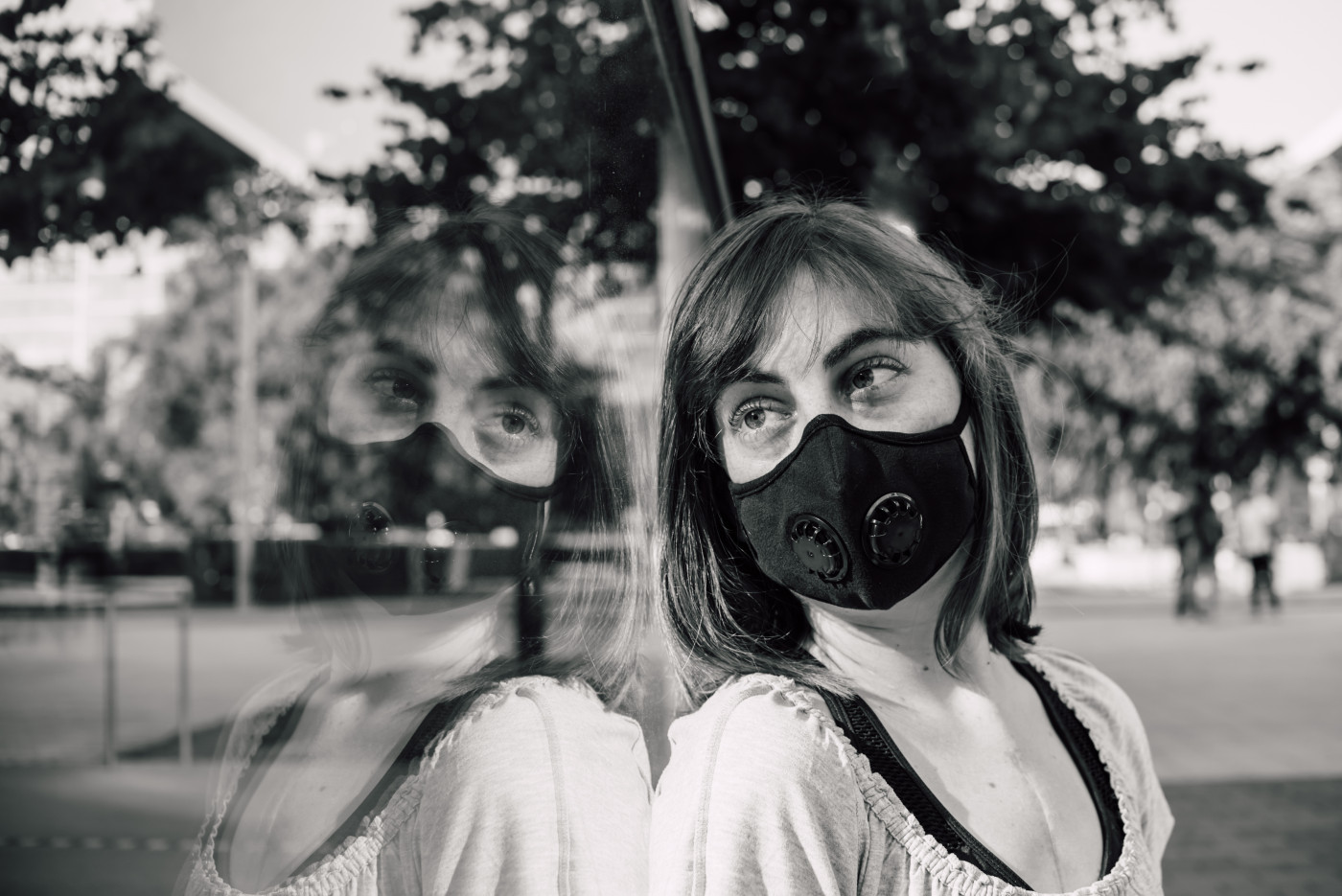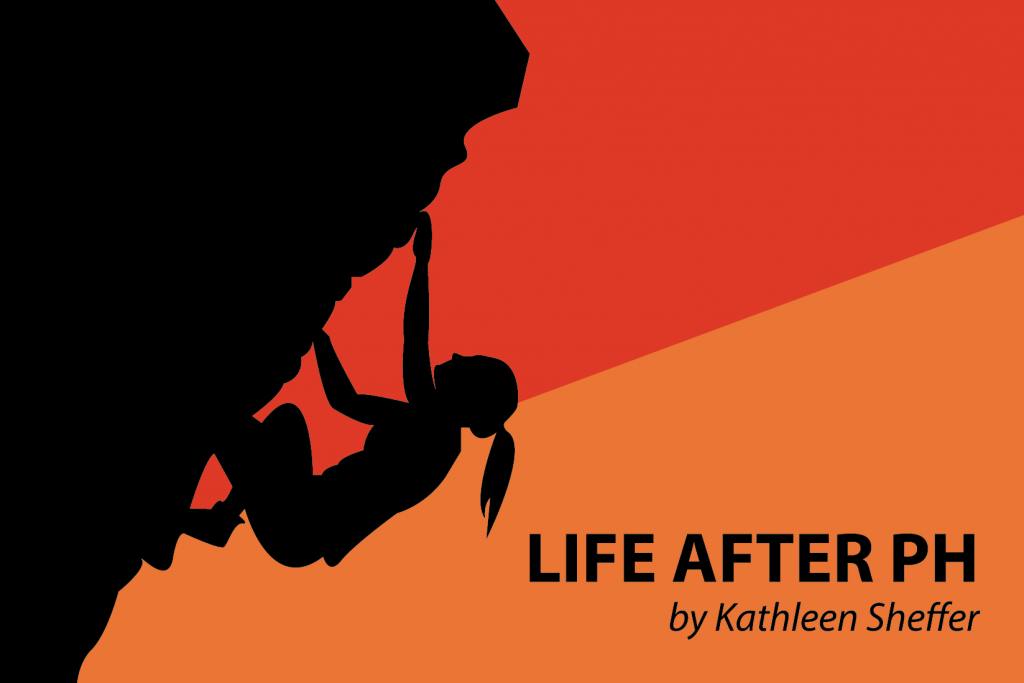It’s Not a Costume: Wearing Masks After Transplant

Photo by Monica Sheffer

Last year, I wore a black face mask every day during the month of October. People stopped me on the street to guess my costume. I wasn’t posing as Hannibal Lecter, Batman’s Bane, or Darth Vader, though passing strangers delighted in rasping, “I am your father.” I wasn’t trying to look like a ninja or a Mortal Kombat character either. Three months post-heart-lung transplant, I had no interest in drawing attention to myself.
Having undergone a life-altering procedure that would remodel my ribcage for several months, I already felt like I didn’t belong in my own body. Now I didn’t belong in the neighborhood I called home. I live in the vibrant Castro district in San Francisco; locals and visitors alike don all sorts of costumes without ever getting a double-take. One man hangs around with nothing but a gold sock covering his genitals, often enough for my Lyft drivers to shrug and say, “Oh, yeah. That guy.” And yet, I had someone shout, “Boo!” at me, a barista roll her eyes telling me a cup of coffee would be “hard to drink with that mask on,” and a homeless woman point toward the Wells Fargo suggesting I would “feel better if you go up there and rob them.”
I want to be able to write that after all that I went through – all the far more humiliating moments I had while hospitalized, with slowly draining chest tubes and constipation from a slowly emptying stomach – I am unfazed by comments from clueless strangers. But I felt robbed of normalcy each time. I told myself the experience would help me practice empathy, that every tactless comment was fodder for my memoir.
Though my sister and I laugh about the time a man stumbled when he passed me on a hike, and the time another man tripped down a few stairs when he took a second look at me (Really, men are falling for me all over the place!), wearing a mask adds to my already robust social anxiety. I prefer going to gyms over parties because I don’t have to shout for people to hear me. Some people think I’m wearing an elevation training mask, or that I am sensitive to the loose chalk that permeates rock-climbing gyms. My mask may hide my smile at parties, but it also hides the unbecoming facial expressions I make when I’m struggling on a bouldering problem.
Now that my transplanted heart and lungs are a bit older (and a bit more mine), I wear masks less and less. I’m on lower doses of immunosuppressants and therefore less prone to infection, so I mainly wear masks on public transportation, in hospitals, and at the gym. I notice how different I feel leaving my house without fear of people stopping or staring at me, ordering my coffee or interacting with a salesperson without a physical barrier between us.
Last week underscored the reason I wear masks. They are one of few forms of protection I have in a life replete with risk. All the stares in the world are worth the peace of mind that I am protecting my lungs from infection. My P100 and N99 masks filter particles in the air, and have proved an effective way to train me to stop touching my face. With wildfires severely impacting air quality throughout California, and especially the Bay Area where I live, I’ve seen dozens of other people wearing masks around the city. I went from being an outsider to being a paragon of preparedness.
With the holiday falling on a Monday, I was in the thick of the Halloween festivities when I took my dog for a walk in the Castro neighborhood Sunday night. “I like your costume!” someone hooted. I grumbled “Thanks,” but later it occurred to me that I should have said “I like yours, too,” since we were both in street clothes. I wanted so badly to pass for normal and efface myself from public view. My mask made that impossible, and rightfully so, as masks were not the norm.
This October, I’m not the only one wearing a filter mask. I wish deadly fires had not sparked this trend toward normalization, but seeing more education about types of masks and their applications gives me hope for refuting the misconceptions I’ve experienced. I find silver linings in the midst of disaster: learned empathy and, as always, writing material.
***
Note: Pulmonary Hypertension News is strictly a news and information website about the disease. It does not provide medical advice, diagnosis, or treatment. This content is not intended to be a substitute for professional medical advice, diagnosis, or treatment. Always seek the advice of your physician or other qualified health provider with any questions you may have regarding a medical condition. Never disregard professional medical advice or delay in seeking it because of something you have read on this website. The opinions expressed in this column are not those of Pulmonary Hypertension News or its parent company, Bionews Services, and are intended to spark discussion about issues pertaining to pulmonary hypertension.








CEO Melissa Dumitru
Great article and well done for keeping your sense of humour, it's not easy I know. I get stared at constantly, not mention the comments! I have noticed more people wearing these masks at my hospital where lung transplants are performed and hadn't realised why. Your article has shed some light on an important subject matter and I'm going to share it in our Christmas edition of PHan Mail magazine and on our website transplant info page, if that's ok. Wishing you a happy and 'normal' life, thanks for sharing warmly Melissa phna.info
Alex R Cabrera
Thank you. 💖💖